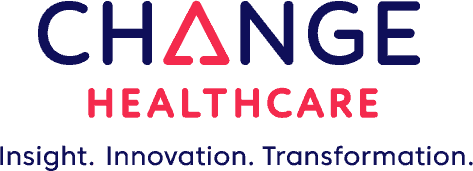|
SGLT2i: A Universal HF Solution? | ECG-AI Boosts AFib Detection
October 6, 2022
|
|
|

|
|
Together with
|

|
|
|
“I went into A-Fib on Wednesday, had my heart shocked back into rhythm on Thursday and I’m playing today.”
|
|
A tweet from J.J. Watt, defensive end for the Arizona Cardinals.
|
|
|
Cardiology Pharmaceuticals
|
|
|
|

|
|
Researchers provided further evidence supporting the use of SGLT2 inhibitors for nearly all types of heart failure cases. Last week, the Journal of the American College of Cardiololgy published an original investigation in which an international team of researchers dig into a fundamental question: when should SGLT2i medications be initiated?
The authors performed a secondary analysis of the DELIVER trial to investigate whether the SGLT2 inhibitor dapagliflozin reduced the risk of worsening HF or cardiovascular death, even for patients who were hospitalized for HF within the previous 30 days. About 10% of the DELIVER patients (n = 654) met this criterion. Not too surprisingly, these patients were sicker at baseline and had higher event rates than those who were not recently hospitalized:
- Patients with recent HF hospitalization were almost twice as likely to experience cardiovascular death or worsening HF after multivariable adjustment (HR: 1.88).
This cohort may have been more vulnerable, but they still reaped the benefits of dapagliflozin:
- Dapagliflozin reduced the primary outcome (worsening HF events or CV death) by 22% in recently hospitalized patients, compared to 18% in patients who were not recently hospitalized.
- The recent hospitalization group also showed consistent quality of life improvement.
- Dapagliflozin did not increase adverse event rates in either group.
Though evidence continues to accumulate supporting the use of SGLT2 inhibitors (see EMPULSE and SOLOIST), financial barriers still exist, making them inaccessible to many patients. The current list prices for dapagliflozin and empagliflozin (two common SGLT2is) are $548 and $570, respectively, and 40% of Medicare Part D beneficiaries pay about $163 out-of-pocket each month.
The Takeaway
A vast body of evidence supports prescribing SGLT2 inhibitors for HF. Insights from the present study provide practical evidence to substantiate the initiation of SGLT2 inhibitors during or right after a hospitalization for heart failure. But more work lies ahead to make this heart failure solution financially accessible to patients.
|




|
|
Automating Echo AI
Check out this Imaging Wire Show featuring Us2.ai’s co-founders, James Hare and Carolyn Lam MBBS, PhD, detailing Us2.ai’s unique origins, impressive capabilities, and big goals to automate echocardiography reporting across the world.
|
|
HeartFlow’s Clinical Data Foundation
HeartFlow FFR-CT Analysis’ widespread payor support and adoption by 80% of the top 50 US heart hospitals is built on a deep foundation of peer-reviewed clinical research. See how HeartFlow FFR-CT has consistently proven to reduce unnecessary angiograms and the cost of care, making it a “game changer” for its users.
|
|
- ECG-AI Boosts AFib Detection: A Lancet-published study further validated Anumana’s AI-guided screening approach that leverages existing ECG data to identify previously unrecognized AFib. Among 1k patients with stroke risk factors but no known AFib, patients labeled by the AI-ECG algorithm as high-risk were far more likely to have an AFib episode lasting thirty seconds or more, compared to those marked low risk (7.6% vs. 1.6%).
- New HF Prognostic Biomarker: Penn Medicine researchers found that endotrophin levels in the bloodstream can be used to predict outcomes in patients with HFpEF. Researchers followed 205 HFpEF patients over a four-year period and found that those with higher concentrations of endotrophins had an increased risk of death (hazard ratio: 1.74) and being hospitalized for heart failure (HR: 2.11). The authors validated their findings in a meta-analysis of 810 HFpEF patients.
- The FlowTriever PE Treatment: New results support the safety of Inari Medical’s FlowTriever mechanical thrombectomy device (FDA-cleared & CE-marked). Among the 800 participants with intermediate- to high-risk pulmonary embolisms, all-cause mortality was only 0.3% at 2 days post-procedure and 0.8% at 30 days, and there were no FlowTriever-related deaths. There were improvements in PA pressure, increases in the cardiac index, and improved RV/LV ratios.
- Nifedipine for Preeclampsia Patients: A new study shows that nifedipine may prevent poor pregnancy outcomes in women with severe preeclampsia. In this triple-blind RCT, 110 patients received either 30mg of nifedipine or placebo once daily during labor and delivery. Those who received nifedipine were 38% less likely to need fast-acting medicine to control their blood pressure during that time period.
- HeartBeam’s ECG Patent: Heart attack detection startup HeartBeam obtained a patent for its technology that transforms vector ECG signals into 12-lead ECG data. The startup’s credit-card-sized AIMIGo device (not FDA-cleared) remotely records chest signals, generates a diagnostic suggestion, uses the newly-patented technology to synthesize 12-lead ECG information, and then sends the analysis to the patient’s physician to review.
- Hearts Donated After Circulatory Death: Transplants utilizing the heart of someone who experienced circulatory death (CD) resulted in similar short-term outcomes as using one from someone who experienced brain death (BD). A comparison of 47 CD hearts with 166 BD hearts revealed that all-cause mortality, ICU readmission, 30-day readmissions, and ICU/hospital lengths of stay were similar among both recipient groups. The only difference was post-transplant right-heart dysfunction, which was impaired in CD recipients one week post-transplant, but resolved by week three. Using CD hearts might increase the heart transplant supply by 30%.
- Sac/Val Improves Mitral Regurgitation: A study of 724 patients with HFrEF revealed that the use of sacubitril/valsartan may reduce mitral regurgitation (MR). After six months of taking sacubitril/valsartan, the number of people with grade 3-4+ MR decreased by 45%. The improvement was sustained out to 12 months.
- Rocket’s Drug Advances to Phase 2: Promising pediatric data propelled Rocket Pharmaceuticals’ heart disease drug into Phase 2 trials. Results of the phase 1 trial (which followed 2 children for up to 9 months & 5 adults for up to 36 months) showed that RP-A501 was generally well tolerated and improved Danon Disease outcome measurements. Rocket reports that pediatric patients showed vacuole clearance and reduced troponin and brain natriuretic peptide levels.
- Cardiac Telemedicine + RPM: Telemedicine alongside remote patient monitoring may reduce cardiovascular-related hospitalization and death risk among adults with heart failure, according to a meta-analysis of 34 studies in The Lancet (N=13.2k patients, 6.6k w/ telemedicine). The RPM and telehealth combination was associated with a 29% reduced risk of CV-related hospitalization and a 17% lower chance of CV-related mortality, although telemedicine in isolation had no effect on all-cause hospitalization or mortality.
- Tasso Teams Up with Catapult Health: Tasso has partnered with Catapult Health to bring its self-operated blood sample collection device into people’s homes. Catapult, a digital preventive care company serving over 2 million people, will now offer the Tasso+ blood collector (which replaces finger-stick tests) as part of its VirtualCheckup program. The partnership aims to help patients detect risk factors for conditions like diabetes, heart disease, and high blood pressure.
- Aficamten Benefits for Hypertrophic Cardiomyopathy: An analysis suggests that aficamten, a cardiac myosin inhibitor, improved symptoms in people with hypertrophic cardiomyopathy. Researchers analyzed data from the REDWOOD-HCM trial (N=38) and found that at both 12 and 24 weeks, patients reported improvements in total symptoms, physical function, and quality of life score. Patients sustained all improvements for at least six months.
|
|
Stress Less with AI-Powered CCTA
When Cleerly’s own quality director, Terry Schemmel, underwent a CCTA with Cleerly analysis, he didn’t have any reason to believe there was anything wrong with his heart. But Terry’s Cleerly analysis identified a 95% blockage in his left anterior descending artery, allowing him to get proactive and personalized care.
|
|
|
|
|